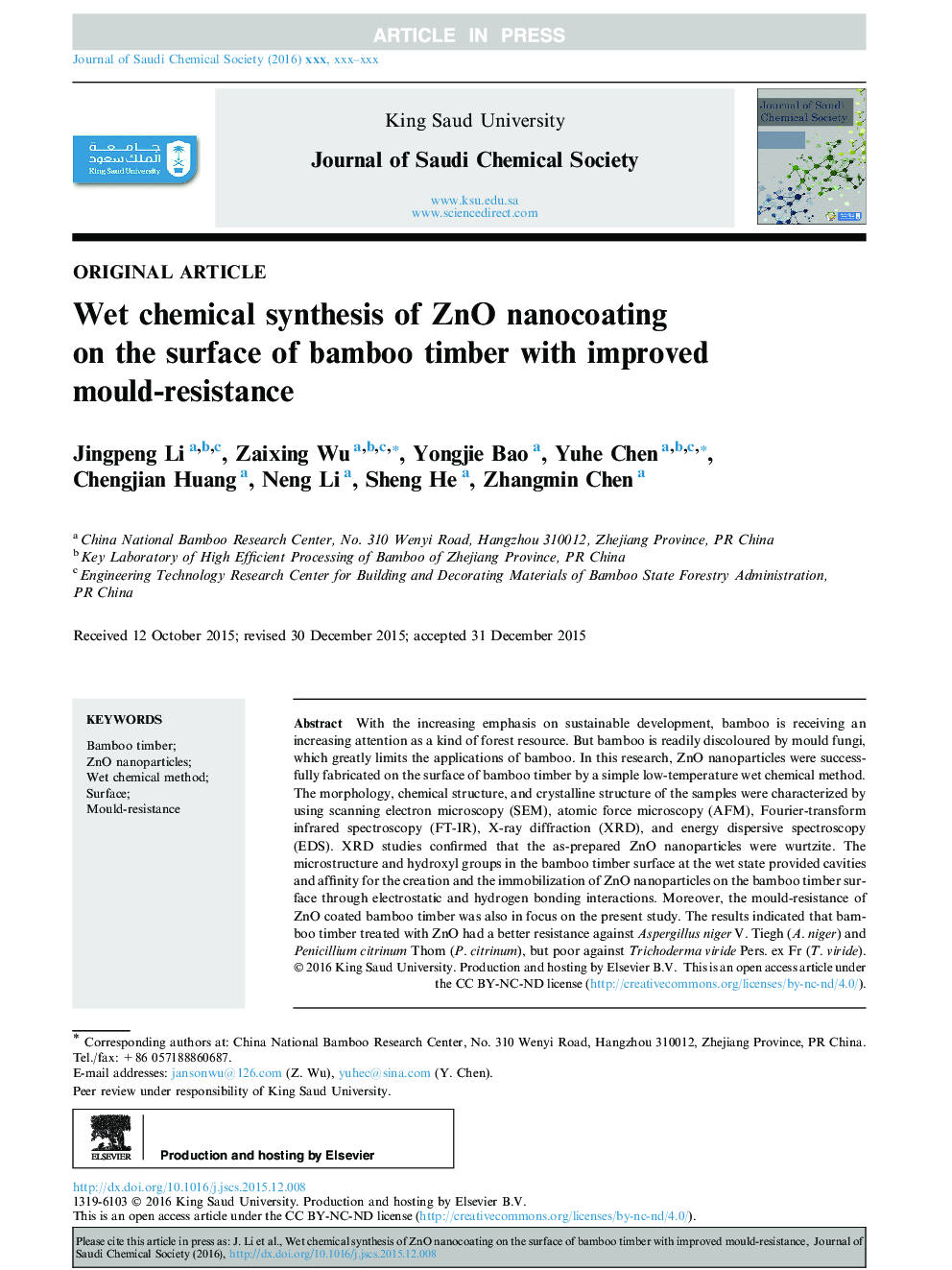| Article ID | Journal | Published Year | Pages | File Type |
|---|---|---|---|---|
| 6670014 | Journal of Saudi Chemical Society | 2017 | 9 Pages |
Abstract
With the increasing emphasis on sustainable development, bamboo is receiving an increasing attention as a kind of forest resource. But bamboo is readily discoloured by mould fungi, which greatly limits the applications of bamboo. In this research, ZnO nanoparticles were successfully fabricated on the surface of bamboo timber by a simple low-temperature wet chemical method. The morphology, chemical structure, and crystalline structure of the samples were characterized by using scanning electron microscopy (SEM), atomic force microscopy (AFM), Fourier-transform infrared spectroscopy (FT-IR), X-ray diffraction (XRD), and energy dispersive spectroscopy (EDS). XRD studies confirmed that the as-prepared ZnO nanoparticles were wurtzite. The microstructure and hydroxyl groups in the bamboo timber surface at the wet state provided cavities and affinity for the creation and the immobilization of ZnO nanoparticles on the bamboo timber surface through electrostatic and hydrogen bonding interactions. Moreover, the mould-resistance of ZnO coated bamboo timber was also in focus on the present study. The results indicated that bamboo timber treated with ZnO had a better resistance against Aspergillus niger V. Tiegh (A. niger) and Penicillium citrinum Thom (P. citrinum), but poor against Trichoderma viride Pers. ex Fr (T. viride).
Related Topics
Physical Sciences and Engineering
Chemical Engineering
Chemical Engineering (General)
Authors
Jingpeng Li, Zaixing Wu, Yongjie Bao, Yuhe Chen, Chengjian Huang, Neng Li, Sheng He, Zhangmin Chen,
